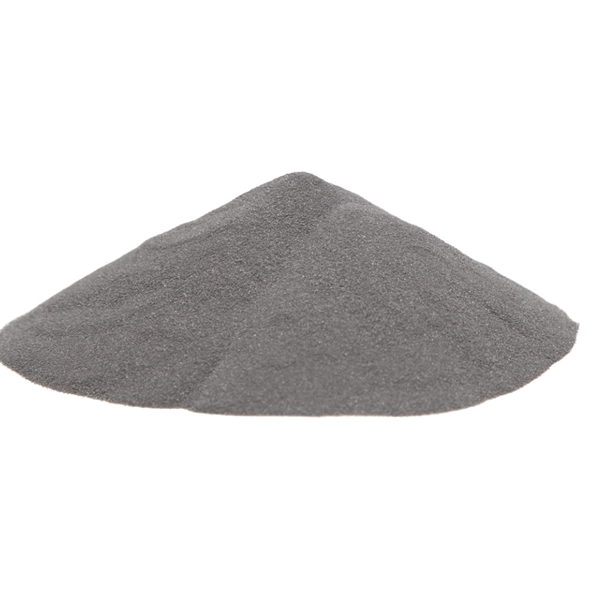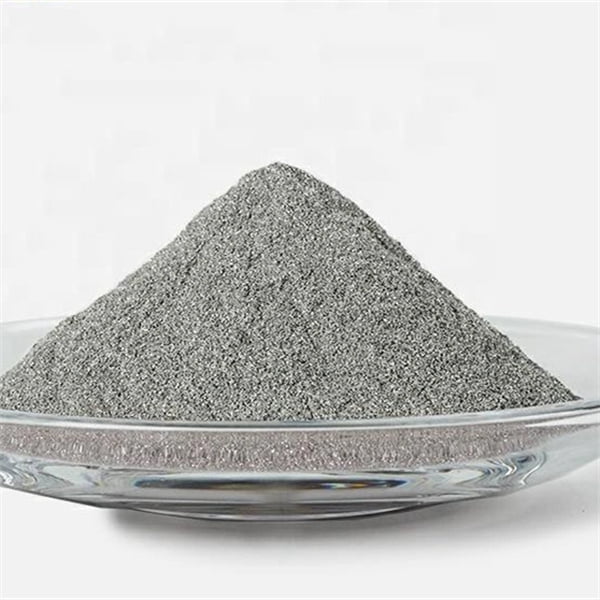Common Models of Aluminum alloy 3D printed metal powder
Table of Contents
Imagine building intricate, lightweight structures with the strength of metal – that’s the magic of 3D printed metal powder. But not all aluminum alloys are created equal, especially when it comes to the world of additive manufacturing. Choosing the right metal powder is critical for bringing your 3D-printed vision to life. So, buckle up as we delve into the fascinating world of common 3D printed metal powder!
Aluminum alloy 3D printed metal powder:AlSi10Mg
AlSi10Mg is arguably the most ubiquitous aluminum alloy powder in 3D printing. Here’s why it reigns supreme:
- Excellent Castability: Imagine pouring molten metal into a mold and achieving a smooth, flawless finish. AlSi10Mg exhibits exceptional castability, translating beautifully into the 3D printing process. This allows for the creation of intricate parts with thin walls and complex geometries – think delicate heat sinks for electronics or lightweight brackets for aerospace applications.
- Superior Weldability: Think of 3D printing as a series of tiny welds building the object layer by layer. AlSi10Mg boasts fantastic weldability, ensuring strong and cohesive bonds between the printed layers. This translates into robust, reliable parts that can withstand stress and pressure.
- Favorable Thermal Properties: When it comes to heat management, AlSi10Mg shines. It exhibits good thermal conductivity, efficiently dissipating heat during the printing process. This minimizes warping and distortion, leading to dimensionally accurate parts. Additionally, its low melting point makes it easier and more energy-efficient to print compared to other aluminum alloys.
However, AlSi10Mg does have a couple of drawbacks to consider:
- Moderate Strength: While strong enough for many applications, AlSi10Mg isn’t the ultimate champion in the strength department. If your project demands exceptional load-bearing capabilities, you might need to explore other options.
- Silicide Formation: The presence of silicon in the alloy can lead to the formation of silicides during the printing process. While not necessarily detrimental, these silicides can slightly impact the mechanical properties and surface finish of the printed part.
Overall, AlSi10Mg offers an exceptional balance of printability, castability, and affordability. It’s a fantastic choice for a wide range of applications, from prototyping and functional parts to design elements and lightweight structures.

Al6061: The Versatile Champion
Al6061 is a highly versatile aluminum alloy widely used in various industries. Here’s how it translates to the 3D printing realm:
- Excellent Machinability: Imagine taking a freshly printed part and easily machining it to achieve precise tolerances and desired surface finishes. Al6061 excels in machinability, making it ideal for post-processing printed parts to meet specific design requirements. This allows for customization and fine-tuning of the final product.
- Good Strength-to-Weight Ratio: Balancing strength and weight is crucial in many applications. Al6061 offers a respectable strength-to-weight ratio, making it suitable for parts that need to be both robust and lightweight. Think of custom-designed brackets for automotive components or housings for electronic devices.
- Corrosion Resistance: Aluminum naturally boasts good corrosion resistance, and Al6061 is no exception. This makes it a valuable choice for applications exposed to the elements, such as outdoor equipment or marine components.
However, Al6061 also has some limitations to consider:
- Printing Challenges: Compared to AlSi10Mg, Al6061 can be trickier to 3D print due to its higher melting point and susceptibility to cracking. This may require specialized printing techniques and experienced professionals to achieve optimal results.
- Moderate Strength: While offering a good strength-to-weight ratio, Al6061 might not be the best choice for applications demanding the absolute highest strength. If your project requires parts that need to withstand immense loads, you might want to explore other options.
Despite these limitations, Al6061 remains a popular choice for its versatility, good strength-to-weight ratio, and excellent machinability. It’s a solid option for creating functional parts, prototypes, and design elements across various industries.
Al7075: The Powerhouse for High Strength
Al7075 is the go-to alloy when supreme strength is the top priority. Here’s what makes it a powerhouse in the 3D printing world:
- Exceptional Strength: When it comes to sheer muscle, Al7075 reigns supreme. It boasts the highest strength among the commonly used aluminum alloy powders for 3D printing. This makes it the ideal choice for applications demanding exceptional load-bearing capabilities. Think of structural components in aerospace and automotive industries, robotic arms, or high-performance sporting equipment.
However, this strength comes at a cost:
- Printing Challenges: Similar to Al6061, Al7075 presents challenges in the 3D printing process. Its high strength often translates to higher brittleness and susceptibility to cracking during printing. This necessitates meticulous printing parameters and potentially even post-processing techniques like stress relieving to mitigate these issues.
- Machinability: While strong, Al7075 can be challenging to machine due to its inherent hardness. This can make post-processing the printed parts for precise tolerances and surface finishes more complex and time-consuming.
- Corrosion Resistance: Compared to Al6061 and AlSi10Mg, Al7075 exhibits slightly lower corrosion resistance. This might be a concern for applications exposed to harsh environments or saltwater.
Despite these challenges, Al7075 remains the undisputed champion for applications requiring the absolute highest strength. With careful printing techniques and considerations for post-processing, it unlocks a world of possibilities for demanding projects in various industries.
AlSi7Mg: The Champion for Strength and Toughness
AlSi7Mg offers a compelling combination of strength and toughness, making it a valuable choice for specific applications. Here’s what sets it apart:
- High Strength and Toughness: AlSi7Mg strikes a beautiful balance between strength and toughness. While not quite as strong as Al7075, it offers superior toughness, making it more resistant to cracking and impact compared to other aluminum alloys. Imagine a part that needs to withstand both high loads and potential impacts – AlSi7Mg might be the perfect candidate.
- Good Castability: Similar to AlSi10Mg, AlSi7Mg exhibits good castability, allowing for the creation of intricate parts with thin walls and complex geometries. This makes it suitable for applications requiring lightweight yet robust structures.
However, some limitations are worth considering:
- Moderate Corrosion Resistance: Like Al7075, AlSi7Mg offers slightly lower corrosion resistance compared to Al6061 and AlSi10Mg. This might be a factor for applications exposed to harsh environments.
- Printing Considerations: While generally printable, AlSi7Mg might require some adjustments in printing parameters compared to AlSi10Mg to achieve optimal results.
AlSi7Mg carves a niche for itself in applications demanding a good balance of strength, toughness, and printability. It’s a valuable option for components in automotive and aerospace industries, sporting equipment, and parts requiring impact resistance.
AlMnScZr: The Emerging Star for Strength, Toughness, and Corrosion Resistance
AlMnScZr is a relatively new player in the 3D printing aluminum alloy arena, but it’s rapidly gaining traction due to its exceptional properties. Here’s why it’s turning heads:
- Exceptional Strength and Toughness: AlMnScZr boasts a unique combination of high strength and outstanding toughness. It can even rival the strength of Al7075 while offering superior crack resistance and impact absorption. This makes it ideal for applications requiring exceptional performance under demanding loads and potential impacts.
- Superior Corrosion Resistance: Unlike other high-strength aluminum alloys, AlMnScZr shines in the corrosion resistance department. It exhibits exceptional resistance to saltwater and other harsh environments, making it a compelling choice for marine applications or components exposed to corrosive elements.
However, some considerations come with this impressive package:
- Limited Availability: As a relatively new player, AlMnScZr might not be as readily available as other aluminum alloy powders. This can limit its accessibility for some projects.
- Printing Challenges: Similar to other high-strength alloys, AlMnScZr can present challenges in the 3D printing process due to its susceptibility to cracking. Specialized printing techniques and experienced professionals might be necessary to achieve optimal results.
- Cost: Due to its unique properties and potentially limited availability, AlMnScZr might come at a slightly higher cost compared to other common aluminum alloy powders.
Despite these limitations, AlMnScZr is a revolutionary material with immense potential. As its availability increases and printing techniques become more established, it’s poised to become a game-changer for applications demanding the ultimate combination of strength, toughness, and corrosion resistance.

FAQ
Q: Which aluminum alloy powder is the strongest for 3D printing?
A: Al7075 boasts the highest strength among commonly used aluminum alloy powders for 3D printing. However, this strength comes with challenges in printability and machinability.
Q: What aluminum alloy powder is easiest to 3D print?
A: AlSi10Mg generally offers excellent printability due to its good castability and weldability.
Q: Is 3D printed aluminum strong?
A: The strength of 3D printed aluminum depends on the chosen alloy powder. Al7075 offers the highest strength, while AlSi10Mg provides a good balance of strength and affordability.
Q: Is 3D printed aluminum lightweight?
A: Aluminum itself is a lightweight metal. Aluminum alloy powders commonly used in 3D printing are well-suited for creating lightweight yet robust parts.
Q: Does 3D printed aluminum rust?
A: Aluminum naturally offers good corrosion resistance. However, the specific corrosion resistance of a 3D printed aluminum part depends on the chosen alloy powder. Al6061 and AlSi10Mg generally exhibit good corrosion resistance, while Al7075 and AlSi7Mg might require additional considerations for applications exposed to harsh environments.
Share On
MET3DP Technology Co., LTD is a leading provider of additive manufacturing solutions headquartered in Qingdao, China. Our company specializes in 3D printing equipment and high-performance metal powders for industrial applications.
Inquiry to get best price and customized Solution for your business!
Related Articles
About Met3DP
Recent Update
Our Product
CONTACT US
Any questions? Send us message now! We’ll serve your request with a whole team after receiving your message.

Metal Powders for 3D Printing and Additive Manufacturing
COMPANY
PRODUCT
cONTACT INFO
- Qingdao City, Shandong, China
- [email protected]
- [email protected]
- +86 19116340731

















